Do you have a question about the Panasonic TH-L32C53T and is the answer not in the manual?
Basic rules for safe and proper servicing procedures.
Procedures for checking AC leakage current (cold and hot).
Techniques to prevent damage from static electricity to sensitive components.
Guidance on using and handling lead-free solder during repairs.
Provides hints and board identification for service navigation.
Details about supported TV broadcast reception systems and channel ranges.
Specifies environmental operating conditions and available input/output connection terminals.
Instructions on how to access and exit the TV's service mode.
Lists parameters and sample data available for adjustment within the service mode.
Details on using the SRV-TOOL for diagnostics, history, and time/count display.
How to enable, adjust, and understand hotel mode settings to restrict TV functions.
Procedure to perform a self-check of the TV's internal devices.
Steps to access and interpret the IIC bus line self-check screen.
Identifies common faults by interpreting power LED blinking patterns.
Diagnostic flowchart for troubleshooting power-related issues based on LED status.
Step-by-step guide for disassembling and reassembling the control button assembly.
Instructions for correctly installing the left and right side speaker units.
Detailed procedure for assembling the LCD panel into the TV chassis.
Precautions and methods for safely fixing and handling the LCD panel to prevent damage.
Steps for assembling the LED panel, including bracket and wire connections.
Guide for fixing the LVDS barrier and cable connections to the LCD panel.
Instructions for assembling metal components like bottom covers and VESA mounts.
Details on the types and torque specifications for screws used during assembly.
Steps for installing various PCBs (P-board, A-board) and connecting panel lead wires.
Procedure for installing the back cover, model nameplate, and AC cord.
Specifies test points and expected voltages for the A-board during measurement.
Specifies test points and expected voltages for the IP-board during measurement.
Defines target values for white balance adjustment under different ambient temperature conditions.
Overview of the TV's main functional blocks and their interconnections.
Illustrates the correct routing and placement of internal wires and cables.
Explains symbols, units, and measurement conditions used in schematic diagrams.
Circuit diagram detailing the IIC bus and related components on the A-board.
Circuit diagram showing HDMI, ARC, Tuner, and Audio AMP connections on the A-board.
Circuit diagram for AVSW, Monitor Out, and Video/Audio In sections of the A-board.
Circuit diagram for Initial Setup, STM, and Peaks ports on the A-board.
Circuit diagram focusing on the backlight control section of the A-board.
Circuit diagram for LVDS interface and T-CON related circuits on the A-board.
Circuit diagram for Power Key, SOS, Power Detect, and Analog ASIC on the A-board.
Circuit diagram for terminal connections (HDMI, USB) and overall set configuration on the A-board.
Circuit diagram for common NAND, SPC, EEPROM, and JTAG interfaces on the A-board.
Circuit diagram for LAN, SD, and USB interfaces on the A-board.
Circuit diagram illustrating various power supply circuits (STB5V, SUB1.8V, etc.) on the A-board.
Circuit diagram detailing various I/O ports, power controls, and interface signals on the A-board.
Circuit diagram showing specific power supply rails (SUB1.2V, SUB1.8V) and related components on the A-board.
Circuit diagram for DCDC converters (SUB1.2V, SUB1.5V) and related control logic on the A-board.
Circuit diagram for DDR memory interface (CHO, CH1) and associated signals on the A-board.
Circuit diagram for various reference voltages and destination-specific signals on the A-board.
Circuit diagram for the GK-board, detailing control buttons and key scan signals.
Circuit diagram for the K-board, including RM receiver and power LED circuitry.
Circuit diagram for the IP-board, illustrating power supply and inverter functions.
Layout and component placement for the top side of the A-board.
Layout and component placement for the bottom side of the A-board.
Layout and component placement for the GK-board.
Layout and component placement for the K-board.
Layout and component placement for the IP-board.
Visual representation of mechanical parts and their list for replacement.
Explains notes and abbreviations related to the electrical replacement parts list.
Basic rules for safe and proper servicing procedures.
Procedures for checking AC leakage current (cold and hot).
Techniques to prevent damage from static electricity to sensitive components.
Guidance on using and handling lead-free solder during repairs.
Provides hints and board identification for service navigation.
Details about supported TV broadcast reception systems and channel ranges.
Specifies environmental operating conditions and available input/output connection terminals.
Instructions on how to access and exit the TV's service mode.
Lists parameters and sample data available for adjustment within the service mode.
Details on using the SRV-TOOL for diagnostics, history, and time/count display.
How to enable, adjust, and understand hotel mode settings to restrict TV functions.
Procedure to perform a self-check of the TV's internal devices.
Steps to access and interpret the IIC bus line self-check screen.
Identifies common faults by interpreting power LED blinking patterns.
Diagnostic flowchart for troubleshooting power-related issues based on LED status.
Step-by-step guide for disassembling and reassembling the control button assembly.
Instructions for correctly installing the left and right side speaker units.
Detailed procedure for assembling the LCD panel into the TV chassis.
Precautions and methods for safely fixing and handling the LCD panel to prevent damage.
Steps for assembling the LED panel, including bracket and wire connections.
Guide for fixing the LVDS barrier and cable connections to the LCD panel.
Instructions for assembling metal components like bottom covers and VESA mounts.
Details on the types and torque specifications for screws used during assembly.
Steps for installing various PCBs (P-board, A-board) and connecting panel lead wires.
Procedure for installing the back cover, model nameplate, and AC cord.
Specifies test points and expected voltages for the A-board during measurement.
Specifies test points and expected voltages for the IP-board during measurement.
Defines target values for white balance adjustment under different ambient temperature conditions.
Overview of the TV's main functional blocks and their interconnections.
Illustrates the correct routing and placement of internal wires and cables.
Explains symbols, units, and measurement conditions used in schematic diagrams.
Circuit diagram detailing the IIC bus and related components on the A-board.
Circuit diagram showing HDMI, ARC, Tuner, and Audio AMP connections on the A-board.
Circuit diagram for AVSW, Monitor Out, and Video/Audio In sections of the A-board.
Circuit diagram for Initial Setup, STM, and Peaks ports on the A-board.
Circuit diagram focusing on the backlight control section of the A-board.
Circuit diagram for LVDS interface and T-CON related circuits on the A-board.
Circuit diagram for Power Key, SOS, Power Detect, and Analog ASIC on the A-board.
Circuit diagram for terminal connections (HDMI, USB) and overall set configuration on the A-board.
Circuit diagram for common NAND, SPC, EEPROM, and JTAG interfaces on the A-board.
Circuit diagram for LAN, SD, and USB interfaces on the A-board.
Circuit diagram illustrating various power supply circuits (STB5V, SUB1.8V, etc.) on the A-board.
Circuit diagram detailing various I/O ports, power controls, and interface signals on the A-board.
Circuit diagram showing specific power supply rails (SUB1.2V, SUB1.8V) and related components on the A-board.
Circuit diagram for DCDC converters (SUB1.2V, SUB1.5V) and related control logic on the A-board.
Circuit diagram for DDR memory interface (CHO, CH1) and associated signals on the A-board.
Circuit diagram for various reference voltages and destination-specific signals on the A-board.
Circuit diagram for the GK-board, detailing control buttons and key scan signals.
Circuit diagram for the K-board, including RM receiver and power LED circuitry.
Circuit diagram for the IP-board, illustrating power supply and inverter functions.
Layout and component placement for the top side of the A-board.
Layout and component placement for the bottom side of the A-board.
Layout and component placement for the GK-board.
Layout and component placement for the K-board.
Layout and component placement for the IP-board.
Visual representation of mechanical parts and their list for replacement.
Explains notes and abbreviations related to the electrical replacement parts list.
| Screen Size | 32 inches |
|---|---|
| Resolution | 1366 x 768 pixels |
| Display Type | LCD |
| HDMI Ports | 2 |
| USB Ports | 1 |
| HD Technology | HD Ready |
| Aspect Ratio | 16:9 |
| Speaker Output RMS | 20 W |
| Audio Output | 20 W (10 W x 2) |
| Connectivity | HDMI, USB |
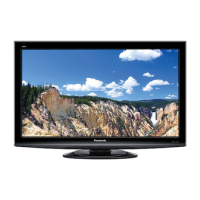
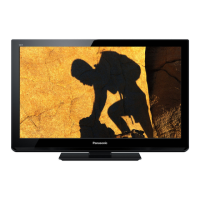
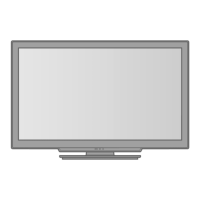
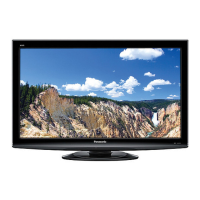
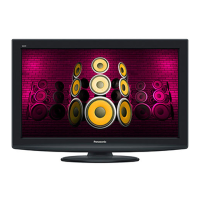
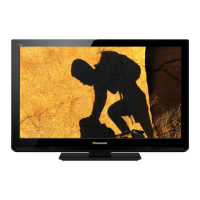
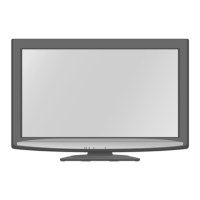



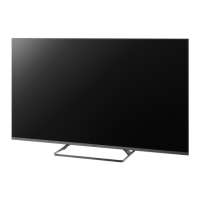
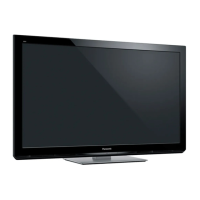
